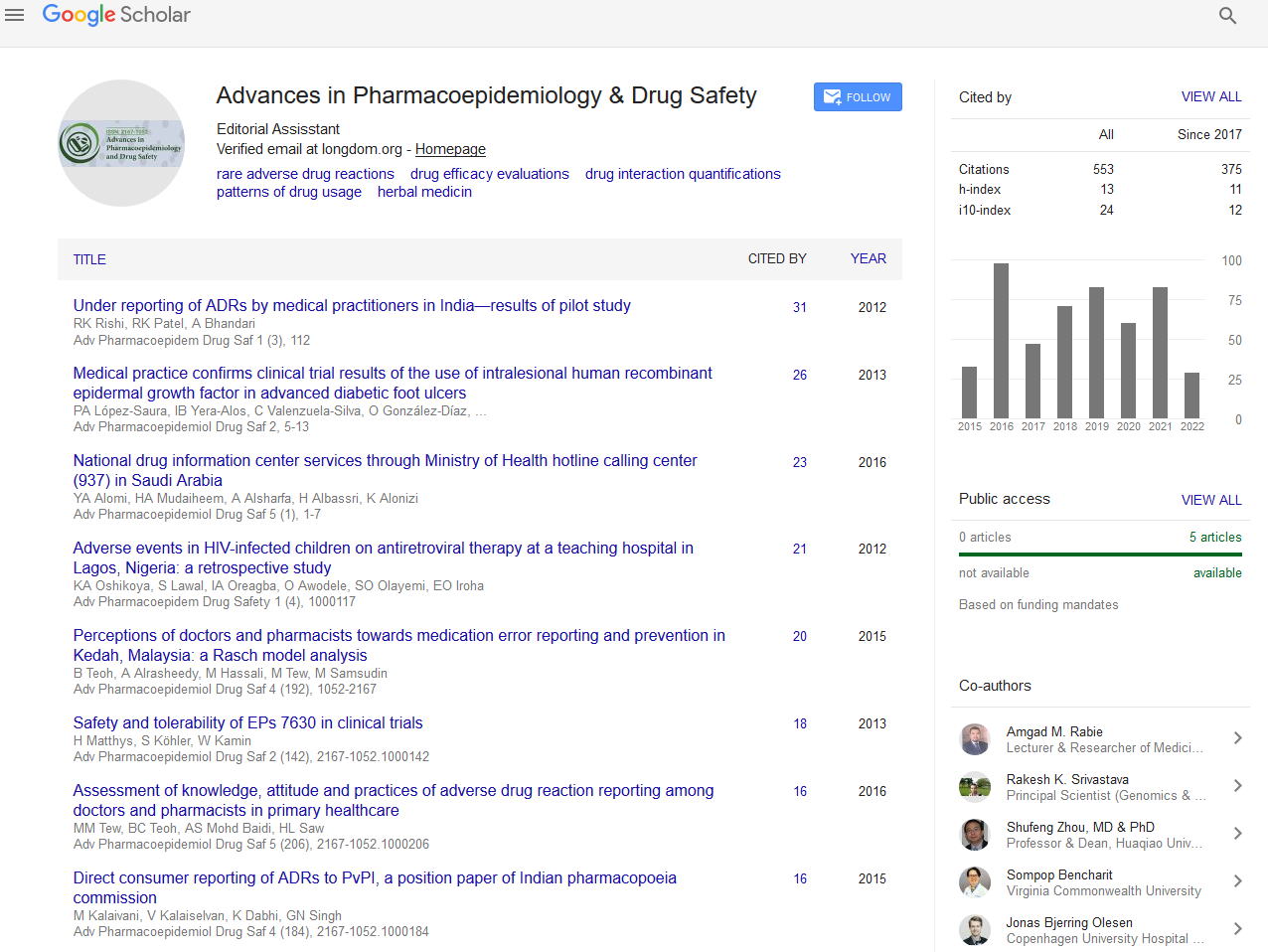Indexed In
- Open J Gate
- Genamics JournalSeek
- Academic Keys
- JournalTOCs
- RefSeek
- Hamdard University
- EBSCO A-Z
- SWB online catalog
- Publons
- Geneva Foundation for Medical Education and Research
- Euro Pub
- Google Scholar
Useful Links
Share This Page
Journal Flyer

Open Access Journals
- Agri and Aquaculture
- Biochemistry
- Bioinformatics & Systems Biology
- Business & Management
- Chemistry
- Clinical Sciences
- Engineering
- Food & Nutrition
- General Science
- Genetics & Molecular Biology
- Immunology & Microbiology
- Medical Sciences
- Neuroscience & Psychology
- Nursing & Health Care
- Pharmaceutical Sciences
Abstract
Prevalence and Pattern of Potential Drug-Drug Interactions in the Critical Care Units of a Tertiary Hospital in Alexandria, Egypt
Sarah Mahmoud Abd El Samia Mohamed, Zahira Metwaly Gad, Nessrin Ahmed El-Nimr and Ahmed Abdel Hady Abdel Razek
he complexity of the pharmacotherapy involved in the simultaneous use of several drugs and various therapeutic classes makes critically ill patients at an increased risk for potential DDIs. The objectives were to estimate the prevalence of potential DDIs in the critical care units (CCUs) at a main trtiary hospital, to analyze their clinical significance, onset, documentation and severity and to identify their possible determinants. prescriptions contain 4 or more drugs were included. A pre-designed structured questionnaire and a record review sheet were used to collect the following data: sociodemographic, smoking habits, medical history, long term used medications, the presence of hospital aquired infections, APAHE II score, length of stay, organ impairment, number of drugs per prescription and the number of prescribing physicians. Calculating the number of interactions for each patient was performed. The list of prescribed drugs for patient was analyzed using different software. interactions occurred per patient was 2.98 ± 1.91. The highest proportion of interactions had a significance number 1.0, possible and suspected documentation, delayed onset and moderate severity. Age of the patient and the number of prescribed drugs were the two independent factors found to be significantly affecting the prevalence of potential DDIs. increases this possibilit


